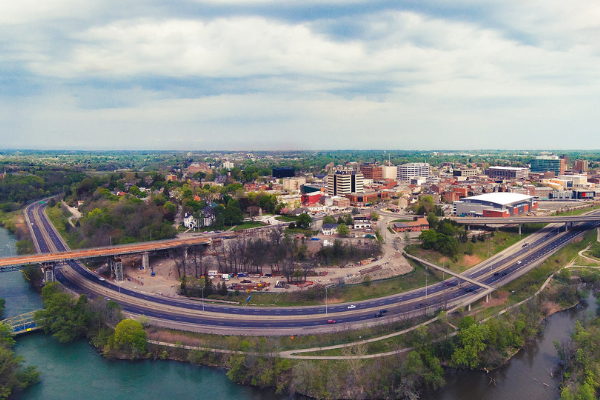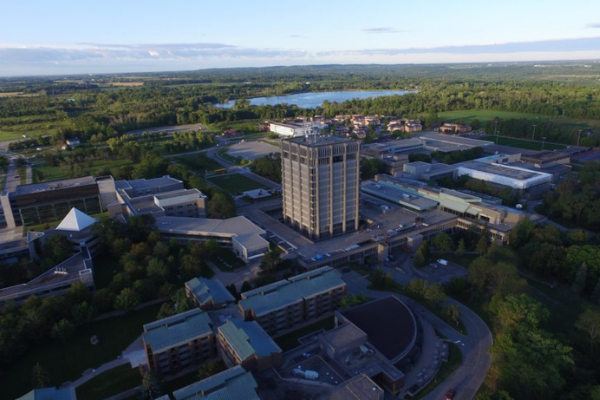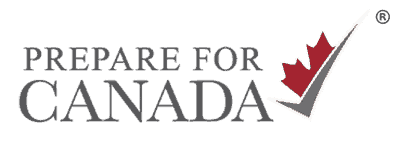
St. Catharines, Ontario is one of the many cities in Canada to consider settling in Canada. It is a medium-sized city in the Niagara Region that is close to many other communities. It is appealing because it’s close to Toronto and the United States border. It’s best known for the Welland Canal, a ship canal that runs through the city.
Canada is a wonderful country to call home. Its diverse population and regions provide you with many unique cities to choose from. The location you choose will have a direct impact on your lifestyle – including where you work, career paths, finances, education, and the cost of living. Are you considering St. Catharines? Read below for helpful information about living in St. Catharines, Ontario.
About St. Catharines, Ontario
St. Catharines is the biggest city in the Niagara Region. It is known as The Garden City because of its extensive network of gardens, parks, and trails. Manufacturing is the city’s biggest industry. It is also the main hub for telecommunication between Canada and the United States. Its unique landscape and location on the Niagara escarpment make the region an important area for tourism and agriculture.
The city was first settled in 1779. It was later incorporated as a town in 1845, and officially became a city in 1876.
Advertisement:
Due to its proximity to other communities in the area, St. Catharines and other towns in the Niagara Region are often referred to collectively. The region includes the 12 communities of Fort Erie, Grimsby, Lincoln, Niagara-on-the-Lake, Niagara Falls, Pelham, Port Colborne, Thorold, Wainfleet, Welland, West Lincoln, and St. Catharines.
St. Catharines, and the Niagara Region in general, has a strong history of welcoming and integrating newcomers. And the many community and cultural organizations that work in the area support this. It’s a growing and diverse community with many recreation and cultural activities to help you meet new people.
How Many People Live in St. Catharines, Ontario?
The city of St. Catharines has a population of 136,803 as of the 2021 Census. This is about one-third of the residents in the Niagara region. The St. Catharines-Niagara Region has over 420,000 residents, making it the sixth-largest metropolitan area in Ontario and the thirteenth-largest in Canada overall.
How to Find a Job & Build a Career in St. Catharines
St. Catharines’s Local Economy
Manufacturing is the city’s dominant industry. There are also many other industries thriving in the area. The top industries in St. Catharines are:
- Agriculture, food, and beverage
- Cross-cutting technologies
- Healthcare
- Education
- Manufacturing
- Tourism.
The city has several emerging sectors such as engineering, computer systems design, scientific research and development, and technology.
Advertisement:
Major Employers in St. Catharines
The biggest employers in the city are:
- Brock University
- Niagara Health System
- District School Board of Niagara
- Algoma Central Corporation
- General Motors
- SITEL
- Ontario Ministry of Transportation
- Royal LePage
- Unifor.
Career Pathways in St. Catharines
To look for jobs in the St. Catharines and Niagara Region you can look at individual company websites for opportunities. You can also use websites such as the Government of Canada Job Bank. Another option is to work with local recruitment agencies such as Express Employment Professionals, On Demand Staffing, and the Niagara Employment Help Centre.
Browse jobs in St. Catharines here.
Related Post:
Ontario Canada | Population, Cities, Economy & Culture
The St. Catharines Housing Market
Choosing a place to live is an essential decision you will need to make. Many newcomers choose to rent before they buy a home.
Is Housing Expensive in St. Catharines, Ontario?
The cost to buy or rent a home in St. Catharines is on the rise. Like other areas in Ontario and across Canada, real estate prices have increased over the past couple of years. The good news is real estate prices are still slightly lower than the national average. Location is always a prime factor that affects real estate costs. St. Catharines has about 30 communities and neighbourhoods to consider.
Finding a Place to Rent in St. Catharines
Your location, type and size of your rental will affect your costs. The average cost to rent an apartment in St. Catharines is $1,425 for a Bachelor, $1,828 for a 1 Bedroom, and $1,903 for a 2 Bedroom.
Use Rentals for Newcomers to search for available rental units in St. Catharines. Here, you can also find current rental prices in St. Catharines.
There are plenty of rental options including apartments, houses, townhomes, basement suites, and even single rooms available for rent. So, make sure to consider all your options before making a final decision.
Get more information about renting a home: Renting in Canada: What Newcomers Need to Know.

Buying a Home in St. Catharines
The cost to buy a home is on the rise in St. Catharines. According to data from Royal LePage, the median price to purchase a home in the Niagara/St. Catharines area increased 23.3% year-over-year to $733,900 (as of March 2022). The median price for a single-family detached home is $768,100, which is a 28% increase from the previous year. The median price for a condo is $436, 800.
Find out more about buying your first home in Canada: First Time Home Buyer: Newcomer Tips.
Driving & Public Transit in St. Catharines
Driving in St. Catharines, Ontario
Highways are the main access point to get in and out of the city. Residents use two major highways to get around – the Queen Elizabeth Way (QEW) and Highway 406. St. Paul Street and Hartzel Road are other busy roads. All drivers must have a valid Ontario driver’s licence to operate a vehicle. The province uses a graduated licencing system. Learn more about driving in Canada with these 10 essential facts.
Get more information about driving in Canada:
Getting Your Ontario Drivers License
Driving Test in Canada: A Full Guide
Tips for Winter Driving to Ensure Your Safety
St. Catharines Public Transit
St. Catharines Transit Commission operates bus routes in the city. Routes also extend to Thorold. Residents also have access to coach buses and GO transit that provides service to Niagara Falls and Toronto.
Community Support for Newcomers
There are many settlement services and organizations to help newcomers to connect with people in the community. These services can help you to navigate and learn about your new community. They include:
- Niagara Immigration
- Ontario Services for Newcomers and Refugees
- Folk Arts Council Multicultural Centre
- YMCA of Niagara
- Chez Marie
- Casa El Norte
- Matthew House
- Welland Heritage Council and Multicultural Centre
- Fort Erie Multicultural Centre.
Language Support in St. Catharines
Communication is an important skill. If you want to improve your language skills once you land in Canada, you can get language support through several community groups such as Niagara Folk Arts Multicultural Centre, YMCA Employment and Immigrant Services, Welland Heritage Council and Multicultural Centre, Fort Erie Multicultural Centre, Brock University, and Niagara College.
For more information, tools, and free webinars about living in Canada visit our Settling in Canada resource page. We’ll help you to settle in Canada successfully!
Personal Finance & Banking
Organizing your personal finances once you get to Canada is a necessity. Local banks and credit unions offer programs for new immigrants. You can get assistance to open a bank account, get a credit card and apply for other financial products such as a line of credit or mortgage.
Get more banking tips for newcomers:
How Much Money Will I Need to Move to Canada?
Top 10 Financial Steps to Take Before You Leave for Canada
Move to Canada | Transferring Cash & Valuables
Open a Bank Account Before Arriving in Canada
For more information about your financial first steps in Canada, visit our Banking in Canada resource page. Get the essential information you need to manage your finances in Canada!
St. Catharines’s Education System
You can enroll your children in public schools, catholic schools, independent schools, or private schools. Homeschooling is also an option. The city also has several post-secondary institutions.
Read more about education in Canada:
Schooling in Canada | A Look at the Education System
Elementary and High School Education
The District School Board of Niagara (DSBN) oversees more than 119 schools and faculties, including six Secondary Schools in the city of St. Catharines. They are the DSBN Academy, Laura Secord Secondary School, Sir Winston Churchill, Governor Simcoe, St. Catharines Collegiate, and Eden.
The Niagara Catholic District School Board (NCDSB) oversees 61 elementary and secondary schools within the Niagara Region. This includes three Catholic Secondary Schools within the city: Holy Cross, Denis Morris Catholic High School, and Saint Francis.
Post Secondary Institutions

There are several post-secondary institutions in St. Catharines. Brock University and Niagara College of Applied Arts and Technology are the largest. There is also Ridley College, McMaster University’s Michael G. DeGroote School of Medicine opened a satellite campus and Concordia Lutheran Theological Seminary. The schools offer numerous certificate, diploma, and Degree programs.
Read More:
Higher Education Offers Benefits to Newcomers
Where to Get Medical Care in St. Catharines, Ontario
St. Catharines residents have access to great medical care. St. Catharines General Hospital is one of many facilities in the region. The Niagara Health System operates the health care facilities in Niagara. It is a publicly funded system that includes six hospitals with a total of 804 beds and other medical facilities.
Other health facilities found in Niagara Region include the Hotel Dieu Shaver Health and Rehabilitation Centre (124 beds) and the West Lincoln Memorial Hospital (Grimsby).
The Ontario Health Insurance Plan (OHIP) provides residents with health care coverage. Learn how to apply for an OHIP card. In case of an emergency call 9-1-1. This number is the same no matter where you live in Canada.
You also have the option to buy additional  to help cover the costs of prescription drugs and services that are not covered by OHIP. Many employers also offer healthcare benefits as part of your employee benefits package.
to help cover the costs of prescription drugs and services that are not covered by OHIP. Many employers also offer healthcare benefits as part of your employee benefits package.
How to Find A Family Doctor In St. Catharines
Having a family doctor is important to manage your health. In Ontario, You can look for a family doctor who is taking on new patients through Health Care Connect. You can call 1-800-445-1822 or visit www.ontario.ca/findadoctor to search online.
Get more information about health care in Canada: Steps to Access Free Health Care in Canada.
What is Day-to-Day Life Like in St. Catharines?
Things to Do in St. Catharines
St. Catharines and the Niagara Region offer a number of recreational activities. Spacious arenas, state-of-the-art community centres, green parks, rolling trails and bikeways, and numerous sports clubs make it a popular destination for active or leisure-seeking visitors and residents. Enjoy the fresh air and scenic views when you hike, bike, or take a stroll along the Niagara Parkway.
The communities within the Niagara Region are distinct and unique and attract about 15 million visitors annually. Within a 20-minute drive, you can access various festivals, culture, entertainment, recreation, shopping, and education.
Public Spaces & Attractions
There is a lot to see and do in St. Catharines. It has several art galleries such as Rodman Hall Art Centre, CRAM Collective, and the Niagara Artists Centre. If you enjoy festivals check out The Folk Arts Festival, Art of Peace Festival, Niagara Grape & Wine Festival or SCENE Music Festival. Other things to visit include the St. Catharines Museum, Port Dalhousie, or the terminus of the Underground Railway.

Restaurants & Nightlife
St. Catharines is home to several world-class wineries. Going on a wine tour is a must. You can also head downtown to try some of the best restaurants in the city. They include Blue Mermaid Seafood & Steak House, Coppola’s Ristorante, The Yellow Pear, and East Izakaya.
Nature & Natural Landscapes
Many outdoor adventures are awaiting you. You can visit Montebello Park, check out the over 90 kilometres of trails around the city, take a trip to Short Hills Provincial Park, and see the DeCew Falls. Plus, Niagara Falls is only a short drive away.

Sporting Events & Concerts
St. Catharines does not have any professional sports teams. But they do have a variety of minor sports organizations. You are only a short drive away from cities like Toronto, Hamilton, and Buffalo where you can see professional sports. If you want to see a concert, check out the local listings for the FirstOntario Performing Arts Centre or Warehouse Concert Hall.
Culture & Diversity In St. Catharines
Diversity
St. Catharines welcomes people from all over the world. There is a large English, Scottish, and Irish population. Other large ethnic groups include German (14.19%), Italian (8.61%), Polish (5.47%), Ukrainian (5.42), Black (2.9%), and Chinese(2.1%). 2.6% of the population is Indigenous.
Worship
Niagara Region has a majority Christian population, but many of the world’s faiths are celebrated here. You will find many churches, temples, synagogues, mosques, and other places of worship which might be an important source of support when you first settle in Niagara.
The Weather in St. Catharines
The Niagara region is a large area of land, between two Great Lakes, Lake Erie and Lake Ontario, so it experiences significant changes in weather conditions throughout the year.
- Spring (March to June): Temperatures range from 5°C to 20°C. People wear light jackets or no jackets at all. Plants and trees blossom in the many green spaces.
- Summer (June to September): Temperatures range from 15°C to over 30°C, with a tendency for high humidity. People wear light clothing when the temperatures rise.
- Fall (September to December): Temperatures begin to cool down and can range from below zero to 15°C. People wear light or medium jackets. The trees lose their leaves and fall colours are at their best.
- Winter (December to March): Temperatures range from –20°C to 0°C. People wear heavy winter clothes, and the area gets regular and sometimes heavy snowfall (10–30 cm) possible.
Common Questions Immigrants Ask About Living in St. Catharines
Is St. Catharines a Good Place for Immigrants?
St. Catharines is a great community to call home. It is increasingly becoming more diverse as the region grows. It’s in a great location, offers diverse career and education opportunities, and is surrounded by beautiful natural spaces. It has a lot to offer new immigrants to Canada.
What are the Disadvantages of Living in St. Catharines for Newcomers?
There are not a lot of negatives about living in St. Catharines. One area that needs improvement is the transit system. But the city is actively working on making improvements. There are a large number of university students, making the city somewhat of a university town.
What are the Benefits of Living in St. Catharines?
St. Catharines has a growing economy and is located close to other major cities where newcomers can find work. Real estate prices are lower than the national average. The city is dedicated to making the city a welcome space for immigrants and is actively promoting diversity within the community.
For more information, tools, and free webinars about living in Canada visit our Settling in Canada resource page. We’ll help you to settle successfully!

